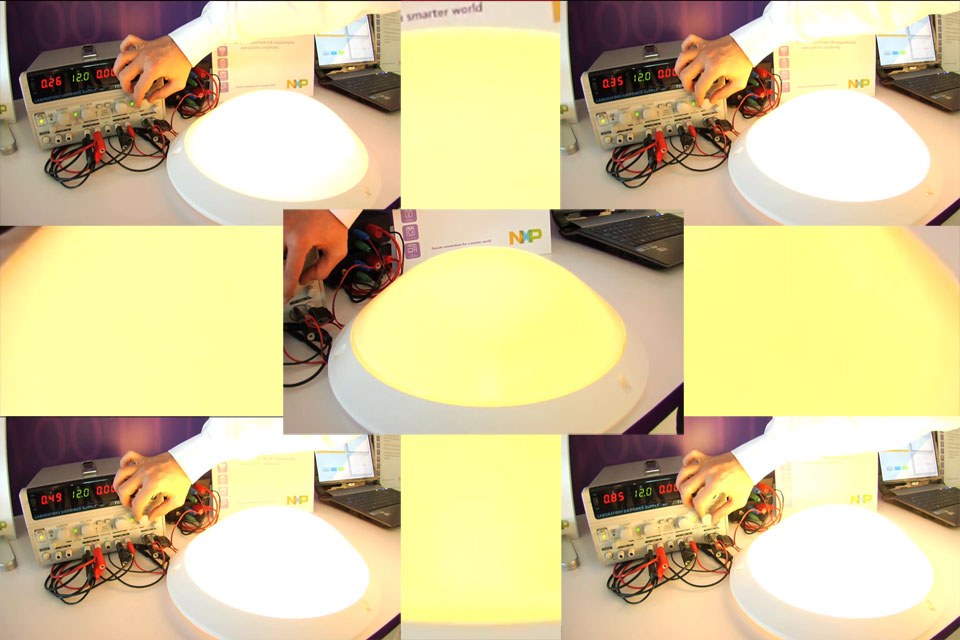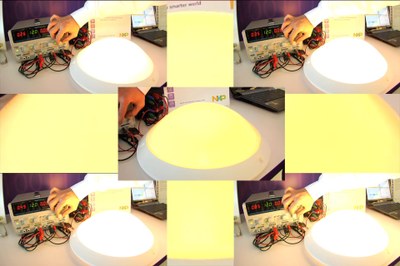Dimming with Warmer, Cozier White Light - NXP Transforms LED Color Quality
When comparing LEDs to incandescent light bulbs, there is a noticeable difference in light quality: LED lamps when dimmed are perceived to be “colder” than incandescents. At CES 2013 this week, NXP Semiconductors (NASDAQ: NXPI) is demonstrating a groundbreaking solution that allows LED lamps to closely mimic the traditional incandescent light bulb, to produce a warmer, cozier white light as they are dimmed. Featuring “sensorless sensing” technology, developed and patented by NXP, this solution also has the advantage of driving down LED system costs by eliminating external temperature sensors, reducing the size of the heat sinks required for LED system cooling, and significantly improving reliability.
With incandescent light bulbs, the light color becomes warmer and more atmospheric as they are dimmed and become less bright. In contrast, LED lamps today are typically unable to match the colors experienced by the users of conventional light bulbs, over the entire dimming range.
To enable the LED to mimic an incandescent when dimming, the NXP solution has integrated three key features into the driving circuitry:
• Combining white and amber LEDs as a cost-effective way to create colors most pleasing to the human eye, following the black-body radiation curve
• Implementing logarithmic correction for eye sensitivity using an analytical model that allows the desired color points to be achieved while dimming
• Using sensorless sensing to measure LED junction temperature directly, enabling accurate, efficient real-time temperature correction, which is critical for reliable control of LED performance in any conditions
Through these features, the smart LED driver developed by NXP is able to provide color and light output stability at any temperature and regardless of the age of the LED. By directly measuring the LED junction temperature through the two existing wires to the LED, sensorless sensing tackles the challenge of LED temperature drift, and delivers further benefits over conventional methods of LED temperature measurement. Using sensorless sensing, no external sensors or wiring is required, reducing the total number of components and enabling more compact heat sinks. In addition, sensorless sensing enables fast performance; accurate temperature measurement (~ 1°C res.); dynamic light control; independence from the heat sink; independence from operating conditions; no need for thermal modeling; and self-calibration to compensate for age.
“Our research team originally set out to answer the question: What would it take to inspire consumers to finally embrace LED lighting with the same affection they have for incandescents? With sensorless sensing technology, we’re demonstrating a new way to achieve the warm quality of light we associate with incandescent light bulbs, using dimmable LED lamps. By reducing the number of components required, sensorless sensing also helps to reduce total system costs, removing another significant barrier to widespread LED adoption,” said Michael Bruno, senior director of business development, Advanced Technologies and Future Innovations, NXP Semiconductors. “The elegance of this approach significantly improves LED reliability and lifetimes, and there is tremendous potential for sensorless sensing in other areas, such as automotive SSL and commercial LED applications.”
NXP’s tunable dimmable white LED demo can be viewed in its “Future Innovations” area of its booth (CP8), and a demo video by NXP’s R&D organization is available here: http://youtu.be/bRieORS6g1w
About NXP Semiconductors:
NXP Semiconductors N.V. (NASDAQ: NXPI) provides High Performance Mixed Signal and Standard Product solutions that leverage its leading RF, Analog, Power Management, Interface, Security and Digital Processing expertise. These innovations are used in a wide range of automotive, identification, wireless infrastructure, lighting, industrial, mobile, consumer and computing applications. A global semiconductor company with operations in more than 25 countries, NXP posted revenue of $4.2 billion in 2011. Additional information can be found by visiting www.nxp.com.


